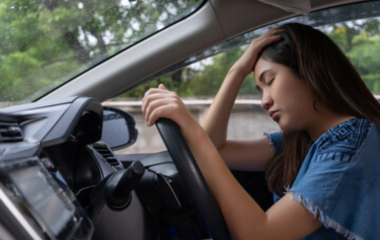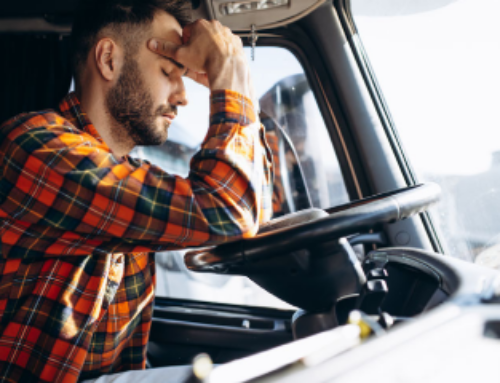Sleep deprivation is common in teens and adults around the world. Among the many negative health and behavioral consequences of sleep deprivation, drowsy driving has the most immediate risk for serious injuries and death.
Drowsy driving happens when a driver of a motor vehicle is too sleepy to stay alert. A sleepy driver will have slower reaction time, reduced road attention, and impaired ability to make good driving decisions. Research shows that driving after being awake for 24 hours is comparable to driving with a blood alcohol content of 0.10, above 0.08 which is the legal limit of intoxication.
The AAA Foundation for Traffic Safety estimates that more than 6,000 fatal crashes are related to drowsy driving every year. Although not all of these drowsy drivers are teens, the National Safety Council estimates that drivers under the age of 25 are involved in at least 50 percent of drowsy driving crashes.
Teens and young adults have a higher risk of drowsy driving because they are newer drivers who are often chronically sleep deprived. The combination of sleepy teens driving with limited skills and little experience poses a danger to drivers and pedestrians.
As a high school student, I am familiar with sleep deprivation and the constant need to balance schoolwork, extracurriculars, and social activities. As a new driver, I am aware of the risks of drunk driving, but drowsy driving was never on my radar. On school days I leave the house at 7:20 a.m. (often sleep deprived) and drive a short distance to school. A rarely discussed topic, driving while sleepy has almost as high of a risk as driving while drunk.
Drunk drivers experience reduced and slower brain function. Alcohol consumption negatively impacts the central nervous system resulting in impaired thinking and reasoning, reduced muscle coordination, and slower reaction, all are critical abilities of safe vehicle operation. As the amount of alcohol consumption increases, the risk of crashes becomes higher. Sleep deprivation has similar effects on the brain. Teens are taught to avoid driving after drinking; why not teach them to avoid driving while sleepy?
Successful campaign tactics to prevent drunk driving could be applied to reduce drowsy driving. Another way to tackle drowsy driving in teens would be to provide them longer sleep duration by delaying school start times. I believe that both strategies could reduce incidents of drowsy driving. Other strategies include developing technology to alert drivers with slower reaction times or reduced road attention. To prevent more victims, efforts to raise awareness of drowsy driving should start now.
Talia M. Dunietz is an 11th-grade student at Huron High School in Ann Arbor, Michigan.





